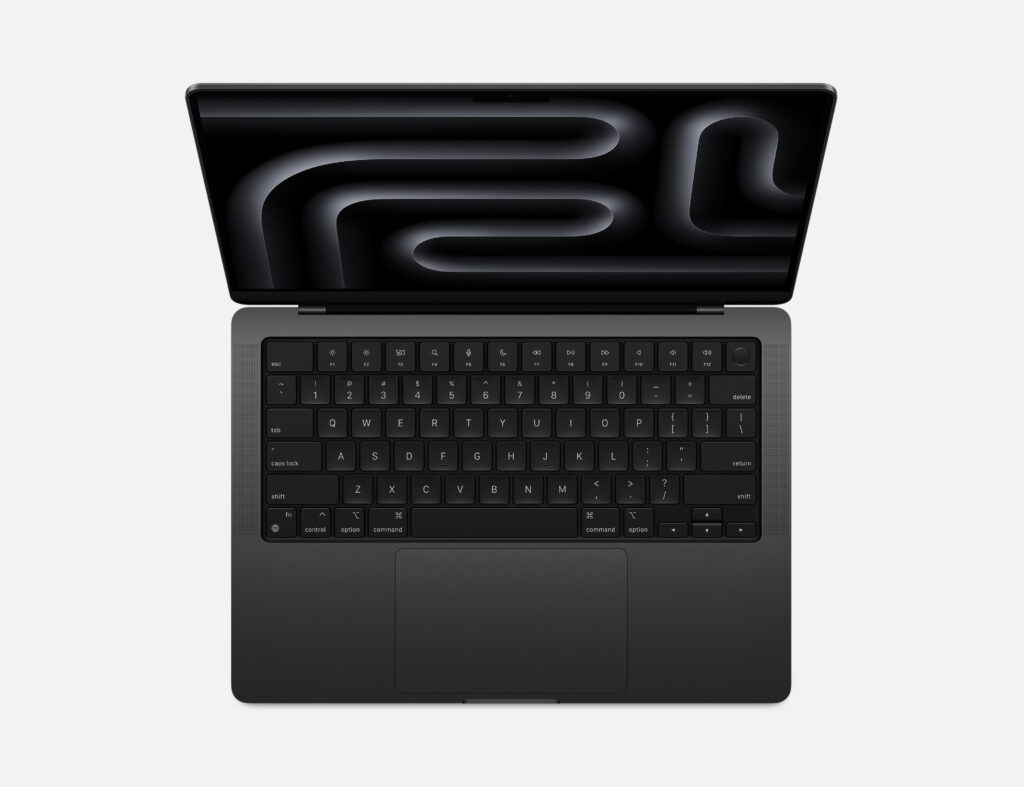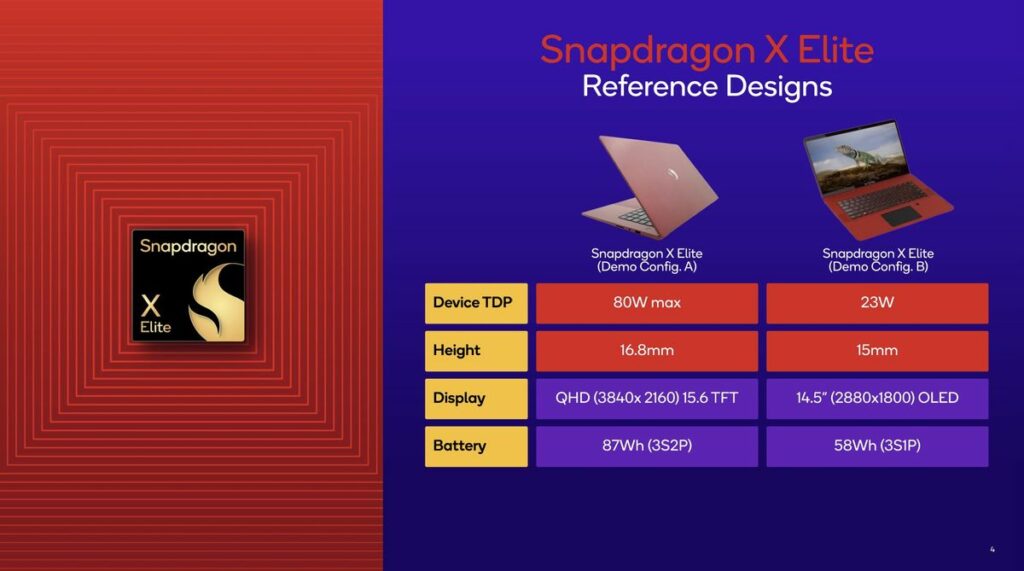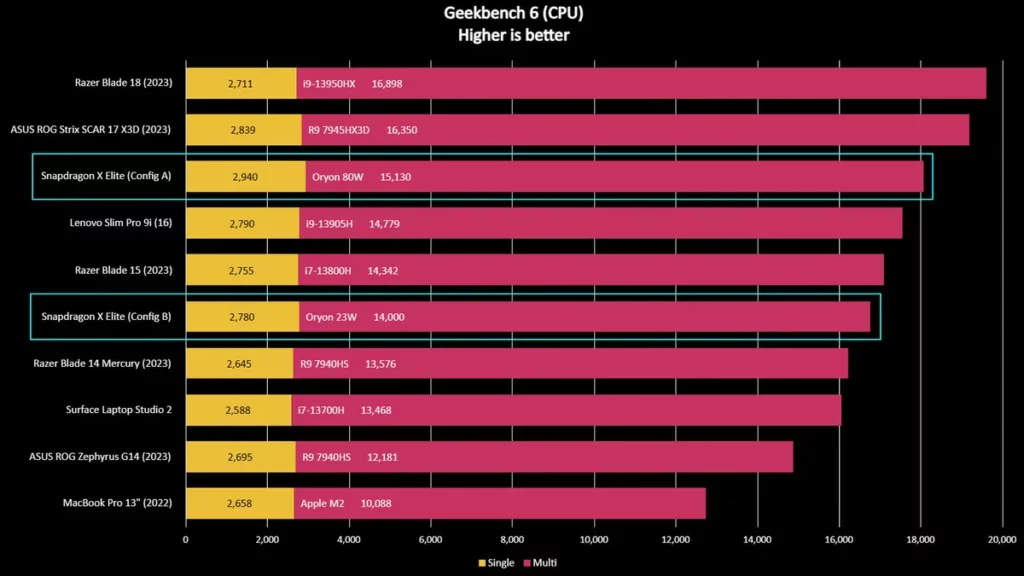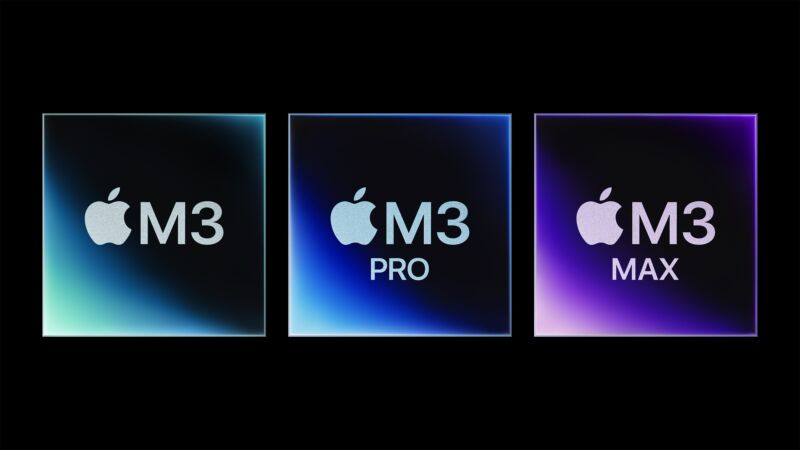All of my opinions are italicized and sources are in blue.
None of the new Macs that Apple is announcing at its “Scary Fast” product event today look very different from the ones they’re replacing on the outside, but the inside is another story. This is the first batch of Macs to include Apple’s next-generation M3-series chips, and unlike past years, Apple is introducing multiple M3 performance tiers all at the same time.
The M3, M3 Pro, and M3 Max all share the same underlying CPU and GPU architectures, the same ones used in the iPhone 15 Pro’s A17 Pro chip. Also like the A17 Pro, all M3 chips are manufactured using a new 3 nm process from TSMC.
The M3’s GPU is also based on the same architecture as the A17 Pro, which means that all M3 Macs are picking up hardware-accelerated ray-tracing support like what you find in more recent Nvidia GeForce and AMD Radeon GPUs. As in desktop PCs, enabling ray tracing in most games and apps is going to come with a performance penalty, which may make it more usable on the M3 Pro and Max than it is in the basic M3, but every GPU in the family at least supports the capability.
Other hardware features added to the M3 GPU include “Dynamic Caching,” which claims to allocate “only the exact amount of memory needed… for a given task,” allowing more tasks to utilize the GPU at a given time. Like DirectX 12 Ultimate GPUs, the M3 GPU also supports hardware-accelerated mesh shading, useful for rendering scenes that use a whole lot of small objects.
Aside from new hardware features, Apple says that peak GPU performance for the M3 series is up to 65 percent faster than M1’s, though as with the CPU performance this will likely vary based on which chips you’re comparing. In our tests, the various M2-series GPUs are generally between 25 and 30 percent faster than their M1 equivalents, so the year-over-year performance increases from M1 to M2 to M3 are fairly even. Apple says that the M3’s rendering performance is up to 2.5 times faster than the M1 for workloads that take advantage of the new hardware acceleration features.
All three of the M3 processors have two different sub-variants, one “binned” version with some CPU and/or GPU cores disabled and a fully enabled version. The M3 Max supports different amounts of memory based on which version you buy; the entry-level version can come with 36 or 96GB of RAM, while the fully-enabled version starts at 48GB and can be configured with 64GB or 128GB. The entry-level version also has a slightly lower memory bandwidth of 300GB/s, compared to the fully-enabled 400GB/s. Previous Max chips always got the maximum 400GB/s no matter how they were configured, so the performance of the lower-end Max could be a little lower than its core counts suggest, particularly for graphics rendering.
As for the machines that these chips go into, they received no other hardware changes. The M3 is coming to a new base model MacBook Pro at $1,599 and the 24in iMac, still at $1,299. The M3 Pro and Max are currently only available for the 14 and 16 inch MacBook Pros, $1,999 for the Pro and the Max starting at $2,999 with a new Space Black color.

As reported by Windows Central,
Qualcomm caused quite a stir last week with its long-awaited announcement of its Snapdragon X Elite platform based on its new Oryon CPU, creating what some are calling the “Apple Mac Moment” for Windows. That CPU is built by the same engineers who designed Apple’s A-series processors, which later scaled up to the M-series found in its laptops. So, perhaps it is no surprise that Oryon can beat Apple (at least where they are today).
During Qualcomm’s keynote, the company went on stage with some fancy graphs and a few handpicked benchmarks, putting it up against Intel’s best 13th-generation Core laptop CPUs and Apple’s M2 (and even M2 Max in one scenario). Of course, some questioned the numbers and claims, as even Qualcomm admitted it overachieved when it came to its original goals with Oryon.
In a special benchmarking session for reporters, the company walked the press through all the benchmarks, expectations (ranges), and the exact configurations of the two reference-designed laptops used. More importantly, there were well over 20 Oryon-powered laptops with Geekbench 6, Cinebench 24, PCMark 10, Procyon AI, and 3Dmark WildLife Extreme and Aztec Ruins (pre-commercial builds).

Compared to other WIndows laptops, both configurations hit over 13,000 on the score, whereas the ASUS ROG Strix SCAR with the brand-new AMD R9 7945HX3D, the most powerful Windows laptop we’ve tested, could only muster 9,000. Even the MSI Titan GT77, with Intel’s previous best processor, the Core i9-12900HX, could only muster 8,555.

On the more familiar and widely used Geekbench 6, both configurations easily beat Razer’s Blade 14 (2023) powered by the AMD R9 7940HS. The MacBook Pro 13” with M2 processor came last with 2,658 single-thread and 10,088 multi-thread. By comparison, Qualcomm pulled off 2,940 ST, 15,130 MT, 2,780 ST, and 14,000 MT at its lower TDP configuration. Even if you factor in the lowest scores/benchmark runs of the Snapdragon X Elite, it still trounces the M2.

As reported by Engadget,
A federal jury has found FTX founder Sam Bankman-Fried guilty on all seven counts of fraud and conspiracy, which he was charged with following the downfall of his cryptocurrency exchange. According to The New York Times, he faces a maximum sentence of 110 years in federal prison. SBF, as he’s now infamously known, was arrested in the Bahamas back in December 2022 after the Department of Justice took a close look at his role in the rapid collapse of FTX. The agency examined whether he transferred hundreds of millions of dollars when the exchange filed for bankruptcy. (The company claimed it was hacked after around $600 million disappeared from its funds.) The DoJ also investigated whether FTX broke the law when it moved funds to its sister company, Alameda Research.
During SBF’s trial, which took place over the past month, prosecutors argued that he used FTX funds to keep Alameda Research running. The fallen entrepreneur also founded the cryptocurrency hedge fund, which was ran by his girlfriend Caroline Ellison, who was aware that he used FTX customers’ money to help Alameda meet its liabilities. Bankman-Fried previously denied that he deliberately misused FTX’s funds.
The Times says his lawyers tried to portray him as a math nerd who had to grapple with “forces largely outside of his control,” but the jury clearly disagreed after the prosecution called Ellison and three of Bankman-Fried’s former top advisers to the witness stand. Ellison and all of those advisers had pleaded guilty, with the Alameda Research chief admitting that she committed fraud at Bankman-Fried’s direction. The FTX founder himself took the stand and said that he “deeply regret not taking a deeper look into” the $8 billion his hedge fund had borrowed from the cryptocurrency exchange.
Bankman-Fried was charged with committing wire fraud against FTX customers; wire fraud on Alameda Research lenders; conspiracy to commit wire fraud against both; conspiracy to commit securities and commodities fraud on FTX customers; as well as conspiracy to commit money laundering. He is scheduled to be sentenced on March 28, 2024 by US District Judge Lewis A. Kaplan, who also presided over the FTX trial.
As reported by 9To5Google,
After a few months of testing, YouTube has opened the floodgates to its blocking of ad blockers, and that’s led to a wave of uninstalls – but not of YouTube.
YouTube’s crackdown on ad blockers started earlier this year in a limited capacity and slowly ramped up to affect more and more users. As of this week, the practice was in full swing, affecting virtually anyone using an ad blocker around the globe. YouTube says that using an ad blocker violates the platform’s policies.
As Wired reports, this rollout has led to “hundreds of thousands” of uninstalls, not of YouTube but of ad blockers. The figures apparently come from various ad-blocking companies, where October saw a “record number” of people uninstalling ad blockers.
Meanwhile, it also led to a record number of new installs, as many users looked to switch from one blocker to another in an effort to keep blocking ads.
One ad-blocking company, Ghostery, shared that 90% of users who completed a survey when uninstalling their ad blocker cited YouTube’s changes as the reason. AdGuard told Wired that daily uninstalls were up for the entirety of October, spiking to 52,000 in a single day on October 18 as YouTube’s notices started rolling out more widely.
It was added that use of the Ghostery blocker is up 30% on Microsoft Edge, as some users have noticed that switching browsers at least temporarily lifts the blocking of their ad blocker. AdGuard, meanwhile, saw its paid subscription rise as some users reportedly saw success with containing to block ads using the tool.
As reported by ArsTechnica,
Microsoft has begun warning Xbox users that “unauthorized” accessories will no longer work on the company’s consoles. The move is likely an effort to limit online cheating that can be enabled by certain external devices, but it seems set to have unintended consequences for communities that rely on adapters for more legitimate users.
In recent days, users on sites like ResetEra and Windows Central began reporting encounters with “error 0x82d60002” when they plug certain accessories into their Xbox. An on-screen message appearing alongside that error indicates that “using unauthorized accessories compromises your gaming experience” and refers users to Microsoft’s list of officially supported accessories.
A recently added Xbox support note clarifies that the error appears when “one of the accessories you’re trying to connect was not manufactured by Microsoft or another licensed Xbox hardware partner.” After the error appears, Microsoft says that “you’ll have two weeks to use the accessory, after which time it will then be blocked from use with the console. At that time, you’ll receive error code 0x82d60003. We encourage you to contact the store or manufacturer where you obtained the accessory to get help with returning it.”
The new crackdown on unauthorized Xbox accessories could be seen as an attempt to hinder “passthrough” controller devices like those in the Titan and Cronus product lines. While these devices have legitimate uses—like button remapping, macro recording, and cross-platform support for generic HID-compliant controllers—they can also help enable hard-to-detect external cheating methods. In 2021, Ars wrote about one such cheating method that used a capture card and computer vision-based machine learning to enable auto-aim using a passthrough device.
The crackdown is also causing consternation among accessibility advocates who can’t (or don’t want to) use Microsoft’s official Adaptive Controller. Reddit user SightlessKombat notes that the ban on third-party accessories will make it impossible for them to “use adaptors to play mainstream games with sighted assistance when accessibility in-game isn’t there.”

